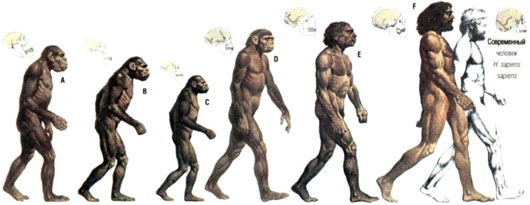Lice 'write' human history
Human history is encoded in the lice 's genome, helping researchers to see hidden aspects of human evolution.
The clues to the evolution of mankind often come from ancestral fossils, as well as molecular fingerprints encoded inside the human genome. However, some researchers are following other paths: exploiting evidence from blood-sucking lice, according to NBC News.
Lice maintain close contact with humans over the millennia. Despite all the human extermination efforts, this parasite persists for many years, becoming a promising treasure of information for those who want to know more about evolution and human history. It was David Reed, head of mammal at the Florida Museum of Natural History, at the 2013 Science Writers conference. For example, traces of lice show that modern people used to go back to the Neanderthals, and humans may have made costumes before leaving Africa.

Experts find new research directions to understand human history - (Photo: Daviddarling.info)
This parasite becomes the perfect tracking tool for host evolution. They spend their whole lives clinging to the victim, easily losing their lives if they fall from the host and often have a habit of parasitic living on a single species. However, humans are abnormal hosts that can provide the environment for more than one louse.
Through genetic analysis, Reed and colleagues identified that more than 3 million years ago, pubic lice in humans originated from lice in gorillas. This finding shows that humans and gorillas at that time must have lived in a close environment. This is very important information, because gorilla fossils at that time hardly existed. Reed and colleagues also analyzed the process of head lice and clothing louse to determine when people began to wear body warmers. They found that louse clothes had branched off from head lice about 80,000 to 170,000 years ago. This means that people used clothes before leaving Africa.
The genome of lice can also reveal information about the interactions between ancestors of modern humans and extinct relatives. Researchers have identified three main branches, called branches A, B and C, based on mitochondrial DNA, the center of cell energy production on lice collected everywhere. Using DNA variants to look back in time, experts found these groups shared a common ancestor about 2 million years ago. Branch C was then separated from the group. By the time 700,000 to 1 million years ago, branch B was separated from A. The timing of the groupings, and the geographical distribution of these groups led researchers to deduce that the branch C grows on the erect (Homo erectus), while B evolves on the Neanderthals.
Experts are continuing to study in hopes of understanding more about the history that has been encoded in lice DNA. They also apply this approach to determine how people reach America.
- DNA lice reveal human migration
- The cure for pubic lice is simple and cheap
- Lice debris removal within a day
- How to prevent pubic lice - Insects cling to 'closed areas'
- Pandemic hair is about to explode when 98% of lice are resistant
- Eye lashes also have lice
- AI learns to write code for themselves
- Dryers kill lice
- Gorillas spread lice to humans
- Details of the three most dynamic stories of human history
- Human genome sheds light on the mystery of human history
- The oldest detection of human DNA can rewrite human evolutionary history
 Discovered an ancient centipede fossil 99 million years old
Discovered an ancient centipede fossil 99 million years old Discovered bat-like dinosaurs in China
Discovered bat-like dinosaurs in China Discovered a 200-year-old bronze cannon of the coast
Discovered a 200-year-old bronze cannon of the coast Discover 305 million-year-old spider fossils
Discover 305 million-year-old spider fossils